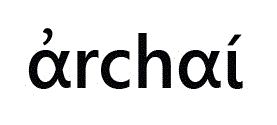Resumo em Francês:
Résumé : En 1919, la même année où Jean Giraudoux fait son « Adieu à la guerre », il écrit « Les morts d’Elpénor ». En 1926, à côté de trois autres histoires, ce texte intégrera le corps d’Elpénor, déterminant l’ensemble, une collection de quatre textes écrits pendant dix-huit ans, le premier étant « Cyclope », écrit en 1908 ; le deuxième, « Sirènes », en 1912 ; le troisième en 1919 ; et le dernier en 1926, « Les nouvelles morts d’Elpénor ». Quand « Cyclope » et « Sirènes » (avec des titres légèrement modifiés) sortent respectivement chez Le Matin en 1908 et chez Paris-Journal en 1912 aucun d’entre eux ne mentionne Elpénor. Bref, c’est avec le développement des deux dernières histoires, que Elpénor, cette figure effacée chez Homère et absente dans les deux premiers textes de Giraudoux, vole la vedette. Cet article voudrait montrer comment la mise à jour du héros et de ses histoires est en dialogue avec la guerre vécue par l’auteur, pour proposer comment les vieilles histoires, lorsqu’elles sont renouvelées, participent à un processus qui leur permet d’élaborer les défis du présent, communiquant le présent, à travers un code déjà public, l’Odyssée.
Resumo em Inglês:
Abstract: In 1919, the same year that Jean Giraudoux made his “Adieu à la guerre” [“Farewell to the war”], he wrote “Les morts d'Elpénor” [“The deaths of Elpenor”]. In 1926, alongside three other stories, this text would integrate the book Elpénor [Elpenor], determining this collection of four texts written for eighteen years, the first being “Cyclope” [“Cyclops”], written in 1908; the second “Sirènes” [“Sirens”], in 1912; the third already mentioned in 1919; and the last in 1926, “Les nouvelles morts d'Elpénor” [“The new deaths of Elpenor”]. When “Cyclops” and “Sirens” (with slightly modified titles) were released respectively by Le Matin in 1908 and Paris-Journal in 1912, none of them mentioned Elpenor. In short, it is with the development of the last two stories that Elpenor, this erased character in Homer who is absent in the first Giraudoux's texts as well, steals the spotlight. This article analyzes how the updating of the hero and his stories are in dialogue with the war experienced by the author, thus proposing that old stories, when renewed, participate in a process that allows them to elaborate the challenges of the present, communicating the present through an already known code, which is the Odyssey.
